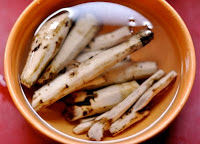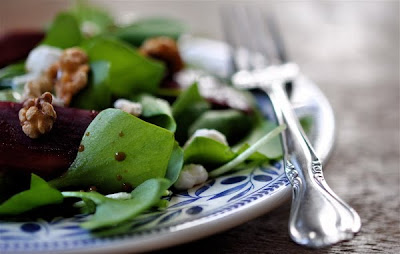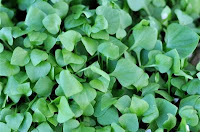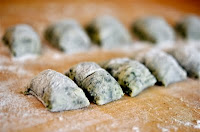
I’m in Arkansas for spring break visiting the inlaws and loving the 70-degree weather down here. This place is a forager’s paradise. I’ll have more to say about that in future posts, but in the meantime I had a post about eating your weedies queued up minus the photos. Turns out all the shots are safe and sound in my camera…back in Seattle. So without further ado, Plan B.
See that weed at top, growing between the rungs of my ladder in the backyard? It’s all over Seattle. Apparently it’s all over Fayetteville, Arkansas, too, according to my limited canvassing of this university town in the Ozarks. In fact, various representatives of the genus Cardamine are common across much of North America and the world. And we might consider using that pinch of Latin when we talk about it, even if it makes us feel professorial and a bit much, because the common name is flat out wrong.
Bittercress. Whoever gave it the name bittercress never actually tasted it. According to Arthur Lee Jacobson: “Over 200 years ago, Linnaeus named a related English weed Cardamine amara, meaning bitter. Writers subsequently transferred the inaccurate name Bitter cress to ALL Cardamine species, and it is one of the largest genera in the mustard family.”
There are some 200 species of Cardamine. Like many other Brassicas, these little annuals and perennials are high in nutrients and have been used for centuries for medicinal purposes. In my region Cardamine hirsuta is the most common species, although I’m pretty sure the robust one in the photo is a different species, possibly Cardamine flexuosa.
All Cardamines are typically hot and peppery in a pleasant way that brings a simple salad to life. This is a plant to know and enjoy regardless of its misleading common name.
































